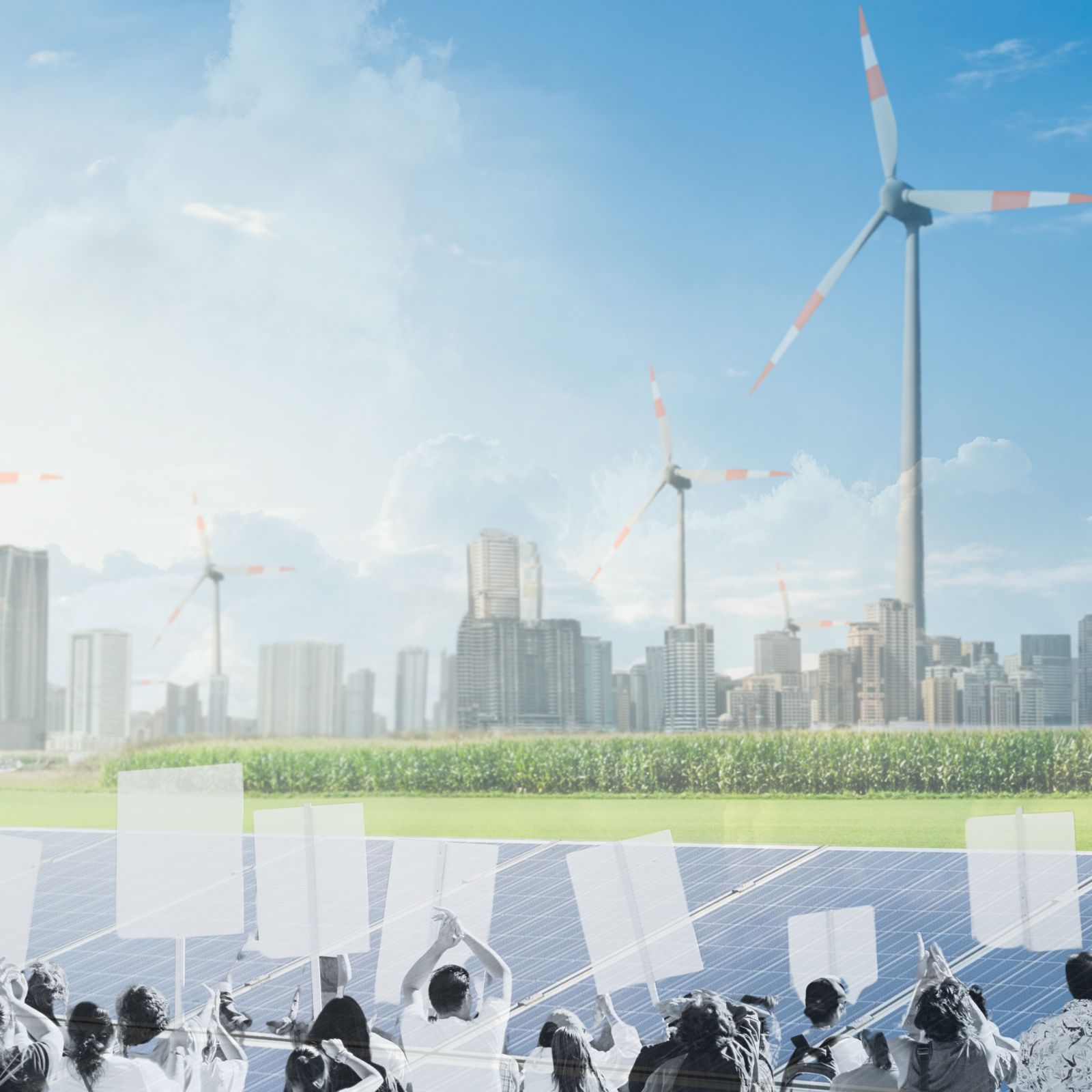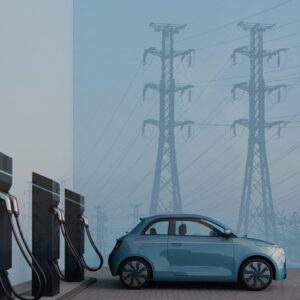
By Shipra Mishra
Edited by: Muhammed Hani Ahsan
Graphic by: Norie Wright
Facing an escalating climate crisis, Maryland took commendable strides by enacting climate goals through the landmark Climate Solutions Now Act of 20221 (the Act). The Act mandates net zero greenhouse gas emissions by 2045 and sets the most aggressive targets to push Maryland toward a sustainable future. It aims for a 60% reduction in greenhouse gas emissions from 2006 levels by 20312.
While the state’s Climate Solutions Now Act has set some ambitious climate goals, their path to eco-glory is turning out to be a tough one, thanks to a roadblock – local resistance to renewable energy projects. Resistance to renewable energy projects in counties and municipalities threatens to impede the state’s progress toward achieving its Renewable Energy Portfolio Standard (RPS) goals. Maryland’s RPS requires 50% of overall electricity generation sales in the state to be met through renewable energy resources by 2030 including a solar carve-out of 14.5% by 20283. With not-in-my-backyard movements, Marylanders are left puzzled by the drama unfolding in their backyards.
Regrettably, at the grassroots level, resistance to renewable energy projects has become a stumbling block. Local governments in various counties and municipalities across Maryland are displaying hesitancy or outright opposition to the implementation of renewable energy initiatives. While the reasons for this resistance may vary, common concerns include siting on agricultural lands, potential disruptions to local ecosystems, and fears of negative impacts on property values. What is at stake for the state? For one, the delay and abandonment of renewable projects faster than you can say “wind turbine.”
In July 2023, the Carroll County Commission voted to prohibit the construction of community solar panel projects on agricultural land4. The decision was primarily based on the need to safeguard the county’s farmland and agriculture. Several other counties have issued temporary moratoriums on solar and wind energy projects. In January 2023, Kent County enacted a moratorium on utility-scale wind farms5. Similarly, Montgomery County also passed legislation to limit solar construction on agricultural land due to local opposition6.
This localized resistance poses a significant challenge to Maryland’s ability to meet its goals set by the RPS and Climate Solutions Now Act. The state’s success in transitioning to a clean energy future depends on collaborating with local authorities, communities, and the private sector. With the support and cooperation of county and municipal governments, the ambitious targets are manageable. There is a need for statewide legislation to address the controversy surrounding the use of zoned agricultural lands for renewable energy facilities.
To address this challenge, a collaborative and inclusive approach is required. Local governments must be actively engaged and educated about the long-term benefits of renewable energy projects, emphasizing job creation, economic development, and the positive impact on public health. Establishing clear communication channels between state and local authorities can help address concerns, build trust, and foster a sense of shared responsibility in the fight against climate change. The state government should consider providing incentives and support for communities that embrace renewable energy projects. This could include financial incentives, technical assistance, and capacity-building programs to empower local governments to navigate the complexities of renewable energy implementation effectively. The recently passed Inflation Reduction Act (IRA) of 2022 and the Infrastructure Investment and Jobs Act (IIJA) of 2021 represent significant steps forward in investments in renewable energy project development. These federal laws offer funding options that the state can leverage to subsidize the costs of transitioning to renewable energy. For example, IRA’s Low-Income Communities Bonus Credit provides tax credits for qualified solar or wind facilities in low-income communities7.
Maryland, with the rest of the US, is on a wild ride toward a cleaner, greener future. But to get there, we must convince our neighbors that renewable energy is not just a passing trend; it is the superhero caped in solar panels, here to save our planet. Overcoming the challenge of local resistance requires a concerted effort to bridge the gap between state and local authorities, clearly define the roles of state and local governments, foster understanding, and promote the long-term benefits of renewable energy projects. By addressing these concerns and working collaboratively, Maryland can ensure that its Climate Solutions Now Act not only sets ambitious goals but also realizes them, leading the way toward a more sustainable future.
Bibliography
[1] Climate Solutions Now Act of 2022, Md. Code Ann. Environment § 2-1204.2 (2013).
[2] Loeb, Vernon. ‘Why Maryland Is Struggling to Meet Its Own Aggressive Climate Goals’. Inside Climate News (blog), 26 September 2023. https://insideclimatenews.org/news/26092023/maryland-struggles-to-meet-climate-goals/.
[3] Maryland Department of the Environment. ‘Renewable Energy Siting and Development.’ Accessed 11 February 2024. https://mde.maryland.gov/programs/land/MarylandBrownfieldVCP/Pages/default.aspx.
[4] Baltimore Sun. ‘Carroll County Commissioners Vote to Eliminate Community Solar Projects on Farmland’, 14 July 2023. https://www.baltimoresun.com/2023/07/14/carroll-county-commissioners-vote-to-eliminate-community-solar-projects-on-farmland/.
[5] DeRobertis, Kristina. ‘Kent County Places Moratorium on Large-Scale Wind Farms’. WBOC TV, 4 January 2023. https://www.wboc.com/news/kent-county-places-moratorium-on-large-scale-wind-farms/article_60cee666-8c80-11ed-845b-fb3d1b73ea28.html.
[6] Loeb, Vernon. ‘Why Maryland Is Struggling to Meet Its Own Aggressive Climate Goals’. Inside Climate News (blog), 26 September 2023. https://insideclimatenews.org/news/26092023/maryland-struggles-to-meet-climate-goals/.
[7] U.S. Department of the Treasury. ‘FACT SHEET: How the Inflation Reduction Act’s Tax Incentives Are Ensuring All Americans Benefit from the Growth of the Clean Energy Economy’, 25 January 2024. https://home.treasury.gov/news/press-releases/jy1830.





